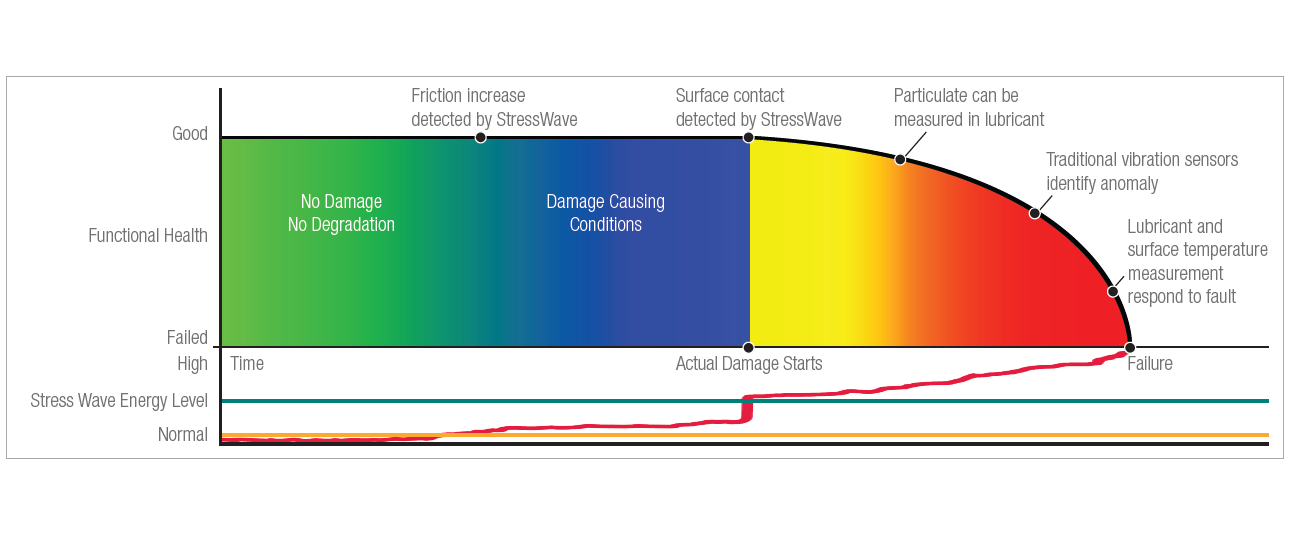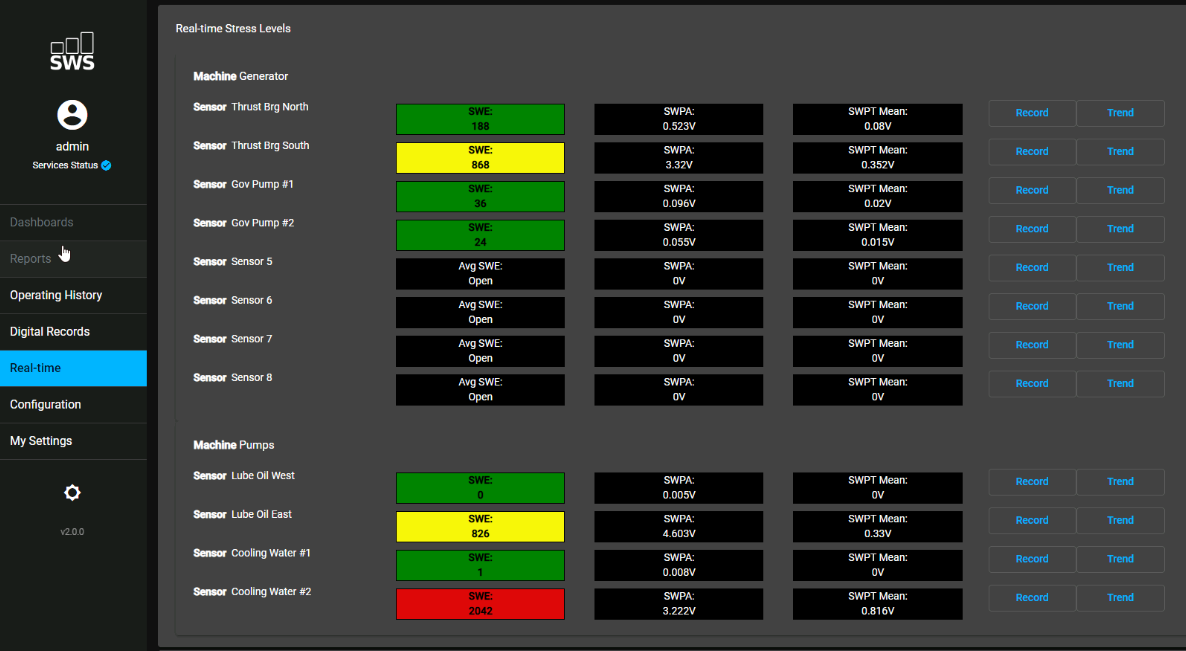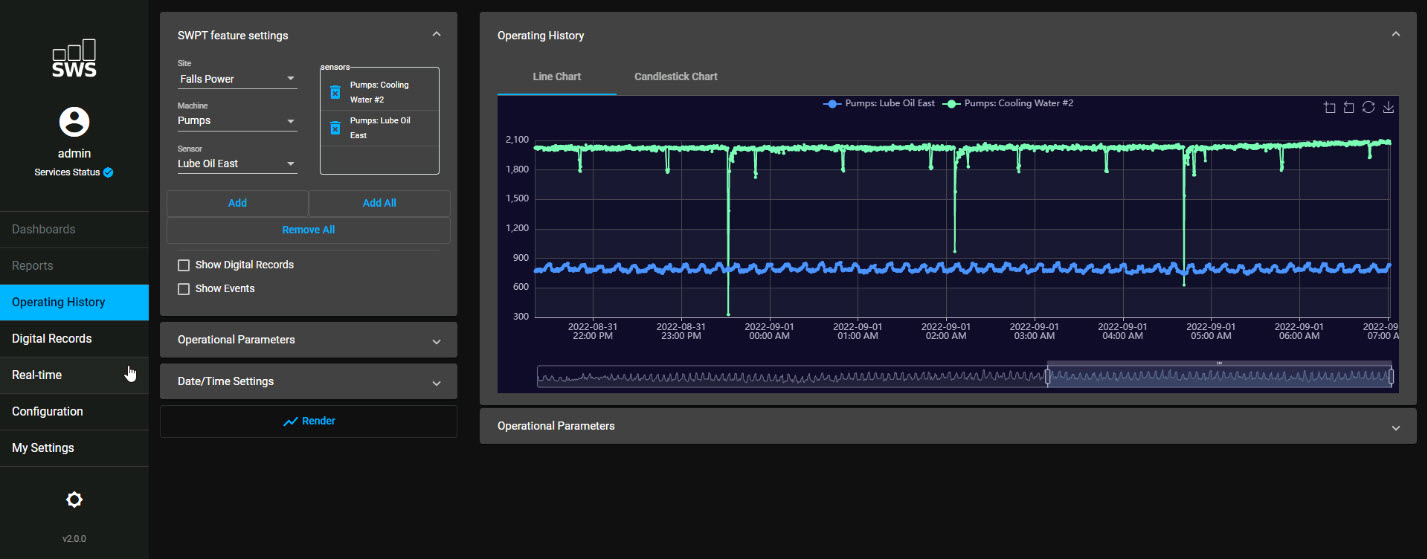StressWave
StressWave Technology
Power & Process Products and Services

Predicting Failure
StressWave is an advanced condition monitoring system for detecting
wear and damage before it becomes excessive, tracking the change over time,
and predicting when the damage is likely to result in equipment failure so
that maintenance can be scheduled before failure occurs.
There are generally two maintenance strategies employed in
industrial settings and in the power generation industry;
periodic and run to maintenance. With periodic maintenance,
often called preventative maintenance, the frequency of maintenance
is based on minimizing the likelihood of an unplanned outage due to
failure of equipment occurring before the next scheduled maintenance.
Run to maintenance, which is really the more dreadful sounding run to
failure, is often used when system redundancy allows plant operations
to continue even after component failure.
What are Stress Waves?
Stress waves are acoustic waves that propagate through solid
components.
The source of the stress waves are primarily the impacts and
collisions that occur due to surface defects, cracks, voids,
excessive wear, corrosion, or other damage. Damage that occurs
to components such as ball bearings tends to increase exponentially
over time. Operators typically do not need highly sensitive equipment
to detect failure that has already occurred. The goal of predictive
maintenance is to measure and track the condition of bearings and
other components such that failure can be predicted allowing maintenance
to be scheduled at a convenient time before failure has occurred.
The stress waves targeted are not audible sound. Both the
frequency and amplitude are well outside the range of human
hearing. Wear and damage sufficient to create audible sound
above and beyond normal equipment sounds likely means excessive
damage has already occurred.
How it Works
The StressWave system employs distributed data acquisition
units and special patented sensors that monitor high frequency
sound generated by friction between moving machine components.
This technique provides a higher degree of dynamic resolution
and more failure lead-time than traditional diagnostic methods.
Imagine a flawless ball bearing spinning in a controlled environment
at 5,000 RPM and the sound such a bearing might make. Now imagine
that bearing has a tiny defect or excessive wear and the additional
sound the bearing might make. The delta between the sound created by
the flawless and damaged bearings represents the magnitude of damage
and when plotted can be used to predict when catastrophic failure is
likely to occur. Now imagine that bearing being at the end of a
turbine driven feed pump shaft, with 8,000 gallons per minute of
350°F water flowing through it. Before the delta between the
flawless and damaged bearing can be determined, the challenge
is to first separate the bearing noise from all of the other much
louder sounds generated within the pump and from other nearby plant equipment.
The specially designed piezoelectric sensor is used with a resonant
frequency that is tuned to a specific frequency within a band where
stress waves occur. The sensor signal is processed by a data collector
using proprietary filtering algorithms to focus in on stress waves representative
of the machine’s operational frequencies.
The Benefits
The downside to periodic maintenance is that maintenance is on
average performed prematurely, increasing the long-term maintenance
costs to the plant. The downsides to run to maintenance are that
failures are likely to occur at inconvenient times and damage to
equipment may occur as a result of the failure that was permitted
to happen. Plants choosing either of these maintenance strategies
are selecting the lesser of two evils.
The solution to performing maintenance too soon or too late
requires the ability to accurately predict when failure is
likely to occur. Curtiss-Wright’s StressWave technology does just that.

